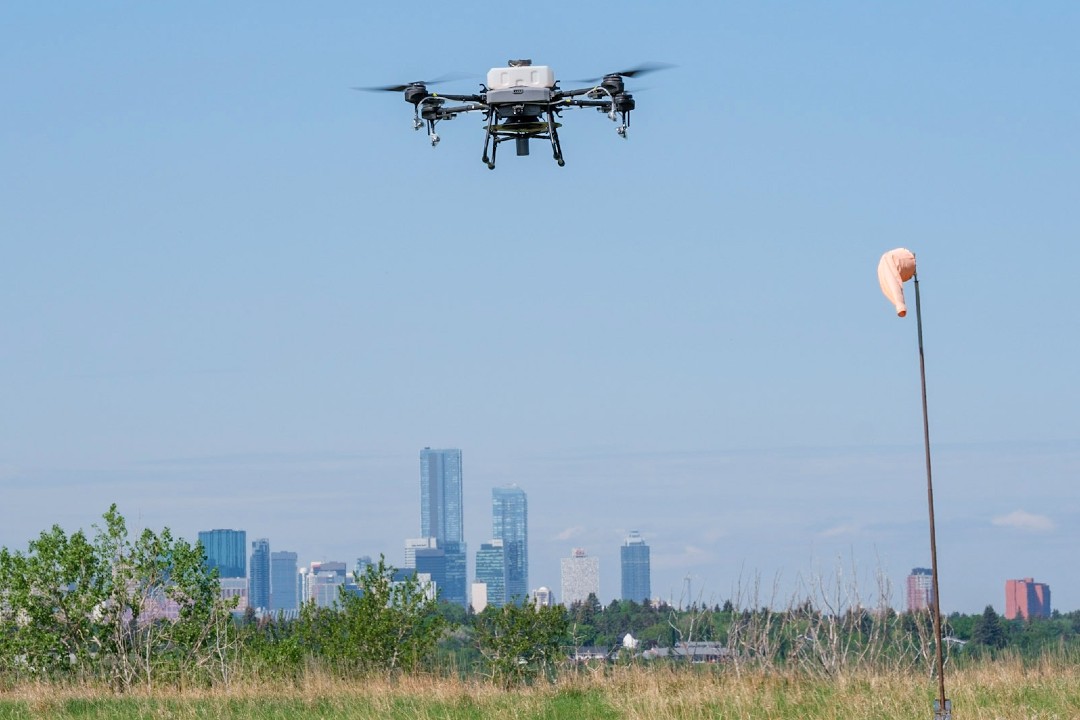Two companies from the region are already capitalizing on Transport Canada's planned November 2025 updates to its rules, which will allow drones to fly beyond the line of sight of their operators for the first time.
"There are more and more uses for drones, and they are becoming more and more mainstream," Mark Palka, the director for Project Safe Canada and manager for Papaschase Security Services, told Taproot about the new laws.
Palka is working on a new security project with Ermineskin Cree Nation in Central Alberta, based on upcoming changes to beyond the visual line of sight (BVLOS) permissions, to make security services safer for workers. It will be delivered by Project Safe Canada, and Papaschase Security Services will assist.
"Security guards don't have a lot of protection. They can't carry weapons, they can't carry any kind of protection," Palka said. "(The guards in Ermineskin are) going to be armed with drones, so they're going to be able to keep a safe distance. They're going to be able to communicate a potential problem, and the videos coming off of those drones will come to the command centre and will be disseminated to a responding police officer or firefighter, depending upon what the emergency may require."
Drones will be dispatched from a hangar atop a building in the community, Palka said.
As the new regulations enable new uses for drones, managing flights and airspace to avoid collisions becomes more important. That's where St. Albert's AIRmarket comes in. The company wants to be a private provider of air traffic control services for drone usage regulated by Transport Canada.
"There's appetite from Transport Canada to enable emergency services as the first users of (BVLOS drone flights) because it's in the interest of public good," Lindsay Mohr, AIRmarket's CEO and founder, told Taproot. "There's a bunch of services that we're going to put up in place and line up this airspace to allow emergency services organizations, starting with the Strathcona County, to fly in that airspace. We expect that to bleed into Edmonton emergency services."
AIRmarket is currently piloting a drone project with Strathcona County that sees drones fly ahead of first responders on emergency calls in an effort to increase the efficiency of deploying employees and vehicles.

Both Project Safe Canada and AIRmarket plan to capitalize on new rules from Transport Canada, which will allow for drone flights beyond the visual line of sight, for the first time. (Supplied)
Mohr's company was also part of two phases of drone trials for BVLOS, as he was the lead convener for the Alberta RTM Trials to help Transport Canada build its new rules. If AIRmarket's work is successful, it might become a client of NAV CANADA, a private, not-for-profit company that manages aerospace for Transport Canada, including with its NAV Drone app.
"NAV CANADA has the monopoly to manage the airspace in Canada," Mohr said. "Transport Canada writes the rules and regulations, and then there's industry."
Mohr intends to disrupt that "monopoly" as drones become part of aerospace, since NAV CANADA doesn't want to do all the work to manage traffic in the world's second-largest country, he said.
NAV CANADA confirmed its appetite to work with the private sector in an email to Taproot.
"Looking ahead, we are actively working to expand our infrastructure to support a broader range of operations in the long term," Maryam Amini, the manager of media relations for NAV CANADA, said. "Importantly, we plan to enable third parties to provide services to drone pilots and operators, allowing them to seamlessly connect with our central systems."
As AIRmarket plots its future work with NAV CANADA and the green light for its Strathcona County project, its FLYsafe software creates revenue. The software is essentially a checklist platform for a drone flight that Mohr described as similar to what pilots of passenger aircraft use before takeoff. Mohr is also working on AIRmarket products to monitor and control airspace called SKYLINK and FLYvision.
Mohr said Edmonton is an advantageous region for drones because the former Edmonton City Centre Airport still has legacy infrastructure in place that's useful for drone flights.
"What (the Edmonton City Centre Airport) leaves behind is something that's super cool for us," Mohr said. "There's airspace where there's a transponder."
